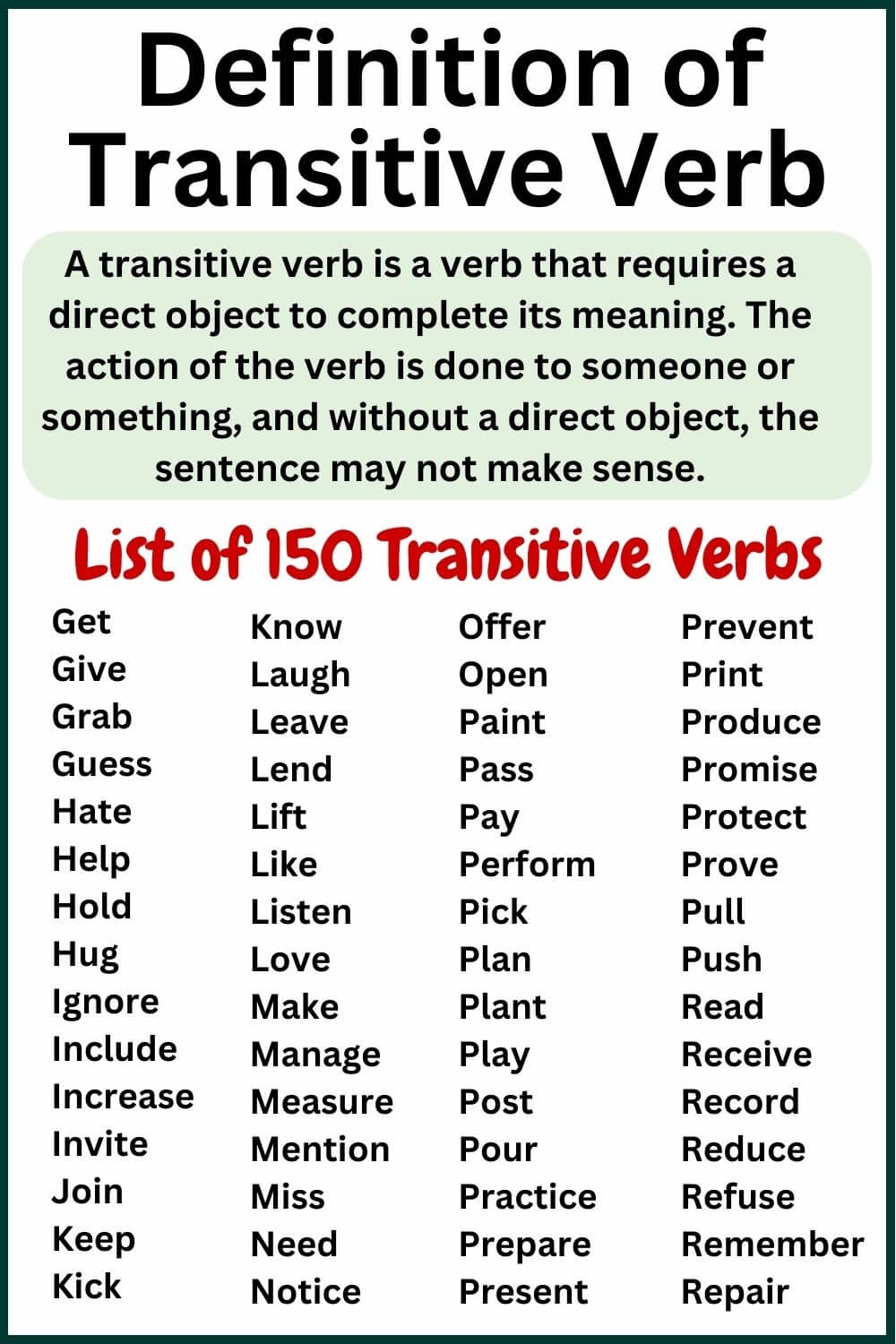Transitive verbs are verbs that require an object to complete their meaning. They are an essential part of sentence structure and understanding them can help improve your writing and communication skills. Finding transitive verbs in a sentence can be done by following a few simple steps.
Transitive verbs are verbs that transfer their action to an object in a sentence. They answer the question “what” or “whom” after the verb. For example, in the sentence “She ate an apple,” the verb “ate” is transitive because it transfers the action of eating to the object “apple.” Identifying transitive verbs in a sentence can help you understand the relationships between different parts of speech.
How to Find Transitive Verbs
One way to find transitive verbs in a sentence is to look for the verb first. Transitive verbs are action verbs that transfer their action to an object. Once you have identified the verb in a sentence, ask yourself if the verb is transferring its action to an object. If it is, then it is likely a transitive verb. For example, in the sentence “He threw the ball,” the verb “threw” is transitive because it transfers the action of throwing to the object “ball.”
Another way to identify transitive verbs is to look for the direct object in a sentence. Direct objects are nouns or pronouns that receive the action of the verb. Transitive verbs always have a direct object that completes their meaning. For example, in the sentence “She wrote a letter,” the verb “wrote” is transitive because it has the direct object “letter.”
Some transitive verbs can also be followed by an indirect object, which is a noun or pronoun that receives the direct object. For example, in the sentence “He gave her a present,” the verb “gave” is transitive because it transfers the action of giving to the direct object “present,” which is then received by the indirect object “her.”
It is important to remember that not all verbs are transitive. Some verbs are intransitive, which means they do not require an object to complete their meaning. By understanding the difference between transitive and intransitive verbs, you can improve your grammar and writing skills.
In conclusion, finding transitive verbs in a sentence is essential for understanding the relationships between different parts of speech. By identifying the verb, looking for direct objects, and recognizing indirect objects, you can easily find transitive verbs in your writing. Practice identifying transitive verbs in sentences to improve your grammar and communication skills.
